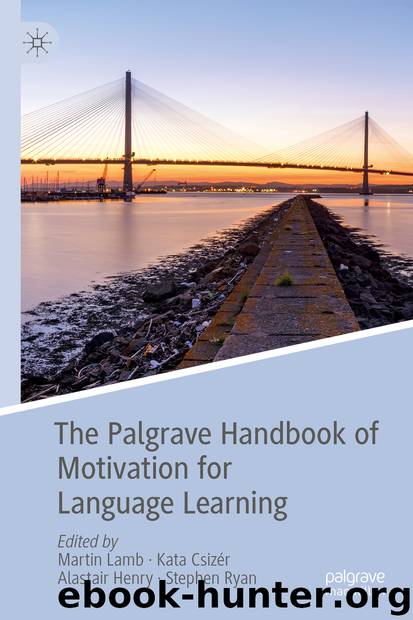The Palgrave Handbook of Motivation for Language Learning by Martin Lamb & Kata Csizér & Alastair Henry & Stephen Ryan

Author:Martin Lamb & Kata Csizér & Alastair Henry & Stephen Ryan
Language: eng
Format: epub
ISBN: 9783030283803
Publisher: Springer International Publishing
Assessment and Feedback
Learning and teaching through projects is markedly different to that of more traditional methodologies, and modified approaches to assessment are required. Although important in all learning contexts, the issue of assessment is particularly acute when projects are introduced in contexts with a prominent emphasis on successful exam achievement (e.g. China : Fang & Warschauer, 2004; Guo, 2006). Ensuring effective assessment is key to establishing and supporting the position and status of projects in L2 classrooms, and to challenge the fact that projects have historically been—and often still are—only used in instances where subject content is not examined (van Lier, 2006). Project assessment remains a highly contentious issue, and a more detailed discussion than can be offered here can be found in Slater, Beckett, and Aufderhaar (2006). As Grant (2011, p. 65) stresses: “If project-based learning is to offer a valuable alternative to teacher-centred instruction, then the rigor of learning cannot be called into question.”
Projects are very different to traditional classrooms, and demotivation can occur when students do not understand how they can succeed in this unfamiliar learning environment (Savin-Baden & Howell Major, 2004). In addition to detailed assessment rubrics, another practical way ‘high achievement’ can be demonstrated is through the use of examples of excellence (Patton, 2012). Here, students are presented with examples of past project solutions or details of previous events as the basis for a critique of their strengths and weaknesses. In their development of an intensive group project, Muir et al. (under review) include a small scale ‘trial run’ in the first week of a four-week project in which students were challenged to organise a fundraising event. This tangible experience of what students were being asked to do was key to triggering the initial flow of motivation. Such physical demonstrations can also serve to help students visualise their own success, so adding a further sensory element to the final goal (Dörnyei & Kubanyiova, 2014).
In addition to summative feedback , formative feedback is also a key motivating feature within projects, and a detailed project structure can also create regular feedback opportunities from both teachers and peers. From a motivational perspective, the most important type of feedback as a project progresses is that which is focused on progress. Progress—or affirmative—feedback focuses on achievements already accomplished, and highlights the positive differences between initial and current levels of performance. This can be contrasted with discrepancy feedback, which focuses on that which is still yet to be achieved (Voerman, Meijer, Korthagen, & Simons, 2012; see further Dörnyei et al., 2016).
Download
This site does not store any files on its server. We only index and link to content provided by other sites. Please contact the content providers to delete copyright contents if any and email us, we'll remove relevant links or contents immediately.
| Administration | Assessment |
| Educational Psychology | Experimental Methods |
| History | Language Experience Approach |
| Philosophy & Social Aspects | Reform & Policy |
| Research |
The Art of Coaching Workbook by Elena Aguilar(50984)
Trainspotting by Irvine Welsh(21518)
Twilight of the Idols With the Antichrist and Ecce Homo by Friedrich Nietzsche(18503)
Fangirl by Rainbow Rowell(9095)
Periodization Training for Sports by Tudor Bompa(8170)
Change Your Questions, Change Your Life by Marilee Adams(7635)
This Is How You Lose Her by Junot Diaz(6794)
Asking the Right Questions: A Guide to Critical Thinking by M. Neil Browne & Stuart M. Keeley(5632)
Grit by Angela Duckworth(5523)
Red Sparrow by Jason Matthews(5390)
Paper Towns by Green John(5089)
Room 212 by Kate Stewart(5035)
Ken Follett - World without end by Ken Follett(4645)
Housekeeping by Marilynne Robinson(4344)
The Sports Rules Book by Human Kinetics(4291)
Double Down (Diary of a Wimpy Kid Book 11) by Jeff Kinney(4207)
Papillon (English) by Henri Charrière(4195)
The Motorcycle Diaries by Ernesto Che Guevara(4012)
Exercise Technique Manual for Resistance Training by National Strength & Conditioning Association(3955)
